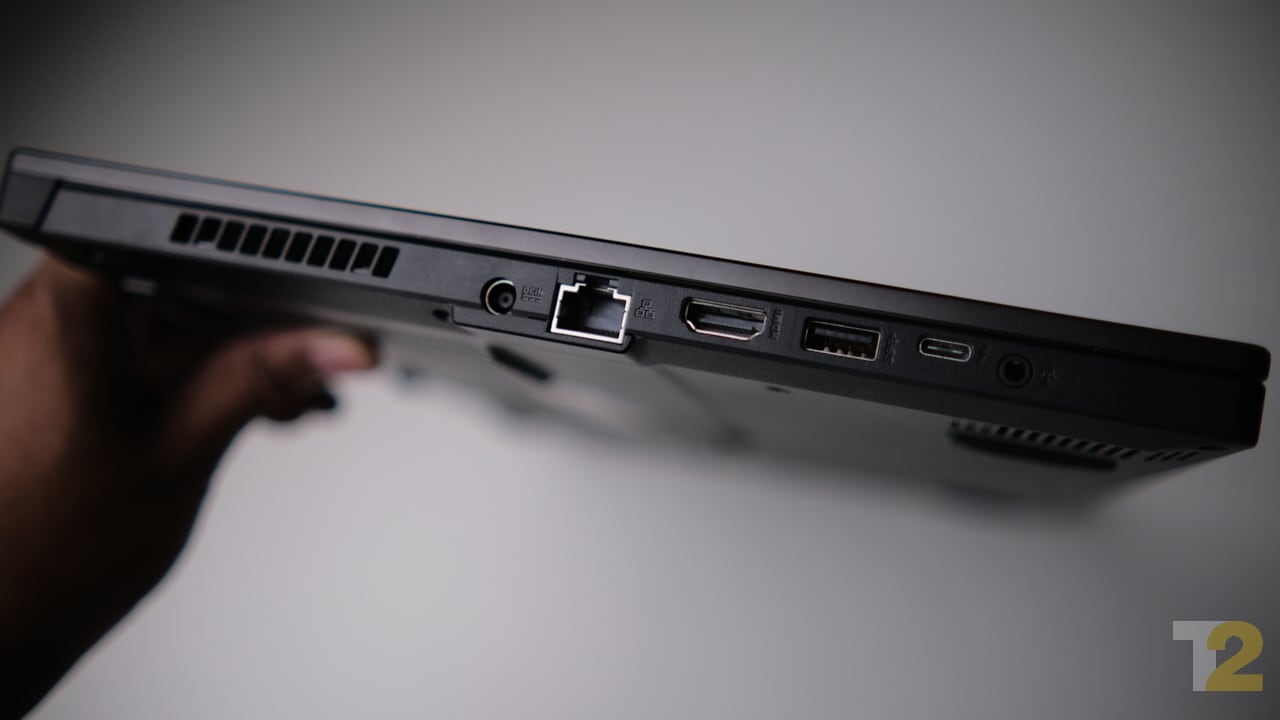Anirudh RegidiMar 30, 2021 5:02:38 PM IS
When other gaming laptops have to push their performance limits and extract every last frame from the GPU, the TUF Dash F15 is unusual in that it doesn’t aim for any of that.
Instead of competing in a race for raw performance metrics with the Tuf Dash F15, Asus stepped back and instead focused on the user experience. As a PC nerd who runs a water-cooled gaming rig – which has been carefully tuned over many weeks to get the maximum possible performance from the hardware – I found Asus’ approach irritating at first. However, after spending a couple of weeks with the device, I find it very smart.
The TUF Dash F15 comes in a simple, elegant chassis that is built to be robust. Lots of heat pipes and a couple of powerful fans keep temperatures under control during long gaming sessions. Image: Anirudh Regidi
Powerful hardware
On paper, the F15 has the specs to take on the best gaming laptops. You get an Intel Core i7–11370H CPU, the new mobile RTX 3070 GPU from Nvidia, a 1 TB SSD, 16 GB RAM and an excellent 15.6-inch display with a refresh rate of 240 Hz. That sees definitely good looking, but there is a catch.

You get a decent selection of ports, including Thunderbolt 3 and a full-sized Ethernet jack. On the other side there are two additional USB-A ports. Image: Anirudh Regidi
The RTX 3070 GPU does not work with maximum performance here. Instead, it works in an 80 + 5 W mode with reduced power (compared to the 115 + 15 W mode, in which it can be operated with sufficient cooling): As a rule of thumb, the higher the power, the better the performance. The values ”+5″ and “+15” indicate additional power that can be delivered to the GPU to improve performance under certain circumstances.
This energy saving mode is necessary because the F15 is a slim and light gaming notebook with limited cooling space. Since the TUF is part of Asus’ mainstream gaming laptops, it lacks exotic features like liquid metal cooling in the premium ROG Zephyrus range, which further restricts thermal performance.
In fact, the thermal and power limitations result in lower performance compared to older platforms like the two westwho packs an older RTX 2070 Super GPU. That sounds like a problem, but it isn’t.

The F15’s RTX 3070 may need to run on reduced power, but the graphical grunt of the newer GPU architecture helps it hold its own against the more power-hungry GPUs of older laptops.
The difference in performance between the two platforms is a handful of percentage points at best, and when you’re playing games, you can’t tell 100 fps from 115 fps. In most games, apart from the demanding Metro Exodus at maximum settings, the laptop easily managed more than 60 fps at 1080p. eSports titles like CS: GO and DOTA 2 easily reach more than 200 fps. To top it off, lower heat generation means the F15’s fans won’t get very loud while gaming.
For a laptop that’s half the price of the Zephyrus S15 and Duo, that’s not bad at all.
The design is great
The laptop is well designed and built to be sturdy. You get a backlit keyboard with great travel, a decent trackpad that you’ll never use, and good speakers. With a color range of 92 percent sRGB, a contrast ratio of 1100: 1, a peak brightness of over 320 nits and a refresh rate of 240 Hz, the display is particularly good. If you have a strong interest in CS, Overwatch, Rainbow Six, and the like, this is the ideal display for you.
Conclusion: why bother with a premium laptop?
So far, the Zephyrus S15 and Duo have been my favorite gaming laptops. They are expensive but offer premium specs, exceptional performance and top notch hardware, features that I think justified the price (Rs 2.5 lakh). After playing with the TUF Dash 15 I don’t think that’s true anymore.
At Rs 1.4 lakh, the TUF Dash F15 is almost half the price of the Zephyrus Duo and S15 and offers almost the same performance, a better display, quieter fans and louder speakers. ASUS is giving its own premium line of gaming laptops a run for their money, and I couldn’t be happier.
Just buy the damn thing already!

